Deserts have been the backdrop for Stacey Wittek’s art and heart since she was a young girl. As a teenager, she regularly went hiking with her father in Nevada’s Black Rock Desert and High Rock Canyon, and as a young woman the arid landscapes of the American West inspired her spoken-word pieces and documentaries on social justice issues, outsider art and small towns.
“I was always a very artistic type, and the desert was a great and glorious place for expanding my artistic interests and messianic tendencies,” Stacey laughs.
This passion for saving the world has recently led Stacey to leave her anti-poverty work at the Nevada Food Bank and move into a role protecting an even larger and voiceless need: 120 million acres of desert conservation area.

In January, 2019, Stacey became the Chief Executive Officer of Friends of Black Rock High Rock, which is celebrating its 20th anniversary as the grassroots protector of the Black Rock Desert – High Rock Canyon Emigrant Trails National Conservation area.
This area is separated into 10 wilderness districts that include “countless canyons, vast open spaces, alkali flats, fantastically formed hot springs and buttes,” as well as the shoreline scars from the ancient Lake Lahontan that once covered the area. It also includes the place Burners call Home each year: the Black Rock Desert.
Stacey oversees a small but fiesty organization of two full-time staff and around 300 volunteers who work year round to manage and protect the National Conservation Area, and to inspire and educate people about the region. They base their work out of a visitors’ centre in Gerlach and an office in Reno.
“A lot of people who go out there think it’s a tough and immutable place, indestructible. But actually what I am learning the most is how fragile that landscape really can be,” Stacey says.
“There are little ecosystems that are so amazing and phenomenal, from the dace fish that live in the hot springs, to the fairy shrimp that requires a kind of perfect storm to emerge, to the Applegate Emigrant Trail, which, because of its remoteness, is largely unchanged.”
“There’s no other place where so much of that landscape is virtually the same as it was a 180 years ago. So I do think that a lot of our core mission is to make people aware of the durable and the sublime aspects of the area, as well as the delicate and the vulnerable.”
Year Round Work and Fly Ranch
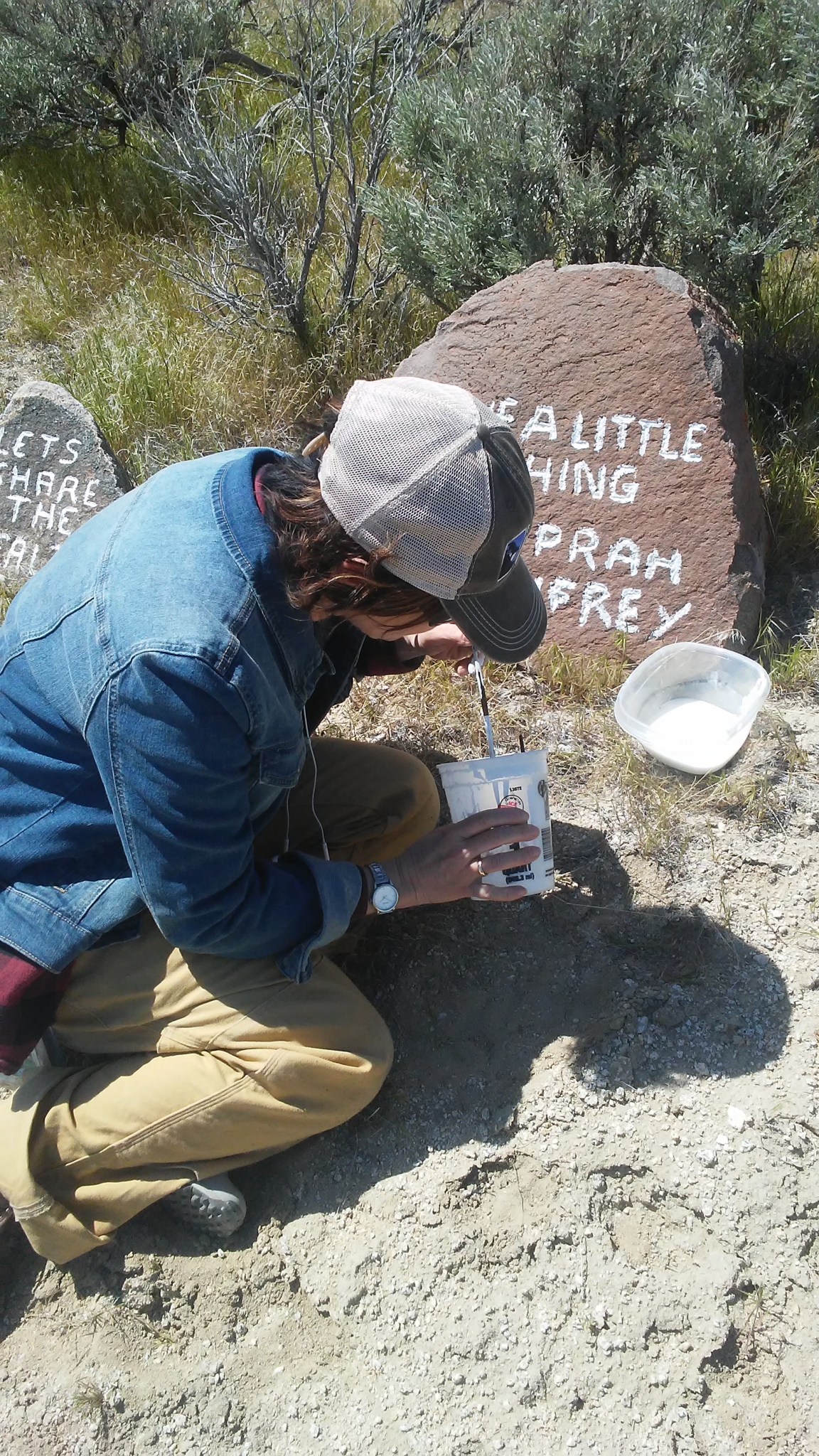
To further this mission, Friends of Black Rock-High Rock run about 20 events each year that give people the opportunity to lend a hand with conservation initiatives, learn about the environment and connect with the landscape.
This includes the Hwy 447 clean up, Guru Rd Restoration, Father’s Day Trego Hotsprings Restoration Campout and the Black Rock Rendezvous, a playa campout that includes restoration work, backcountry tours, a dutch oven cook-off, rocket launches and even a cowboy poetry slam.
“One of the things that we have found is that to get people to come out and interact with that landscape, we also have to make it fun. Fun is important,” Stacey says.
Burning Man Project’s Fly Ranch property has also become part of this mission to educate and inspire people about the area, and the project has helped turn long-term neighbors into even closer partners.
Volunteers from Friends of Black Rock-High Rock run three-hour immersive walking tours of Fly Ranch, with donations helping to further the small organization’s work (and the work Burning Man Project is doing at Fly).
“Getting people to explore the Fly Ranch, as well as the geyser, is a fantastic way for people to have a year-round appreciation of the area. We communicate a story that not everybody would normally hear if you were just going to that site to take some pictures,” Stacey says.
More importantly, Stacey sees the Fly Ranch Project and Burning Man Project partnership as “one of the greatest explorations of public space there have ever been.”
“It’s fascinating to me how this multi‑decade phenomenon could be parlayed into real civic engagement. I’d like to see that we could be an example to the world of what partners working together and collective impact can do in this strange little space in northern Nevada,” Stacey says.
Community Collaborations
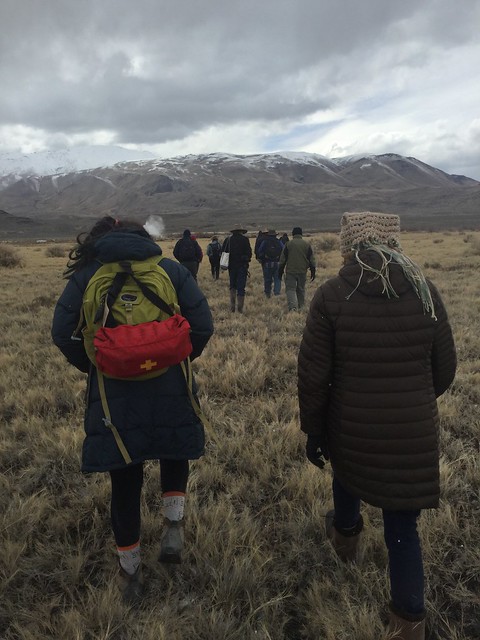
One of those projects involves pint-sized citizen scientists from Gerlach K-12, a local school with only 22 students ranging from Kindergarten to Twelfth Grade.
In May, 20 students spent a day at Fly Ranch learning how to safely collect water samples from a pool connected to Fly Geyser. With the help of an Earth Echo grant, students used water monitoring kits to test and record data on pH, dissolved oxygen, turbidity and temperature.
They were also encouraged to walk around the property and record observations about the landscape, weather, plants and animals in field notebooks. This was the third time that Gerlach K-12 students took part in water testing at Fly Ranch, and you can read about their experience in their own words here.
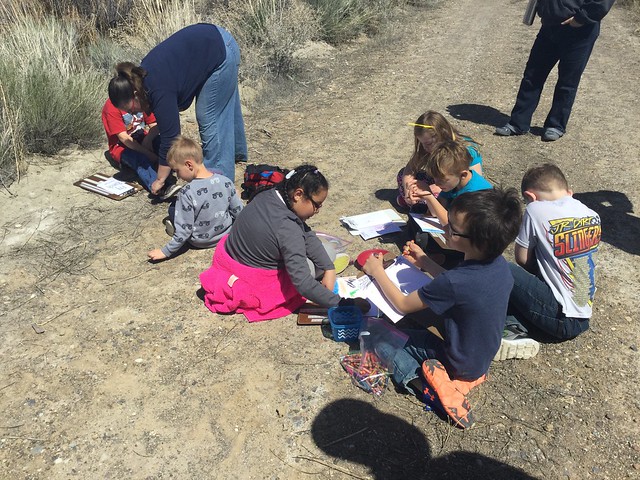
“It’s really exciting to start with all these great young minds thinking about an expanded idea of what conservation, ecology, environmentalism and place can be,” Stacey says.
Such citizen-led action is part of Friends of Black Rock-High Rock’s DNA. The organization formed in 1999 after locals from a range of community groups banded together to push for the area to be designated a National Conservation Area, and to help preserve and promote the region.
The Bureau of Land Management (BLM) is tasked with managing this conservation area, but with dwindling federal resources for public lands and 1.2 million acres to manage, the BLM gets by with a lot of help from its Friends.
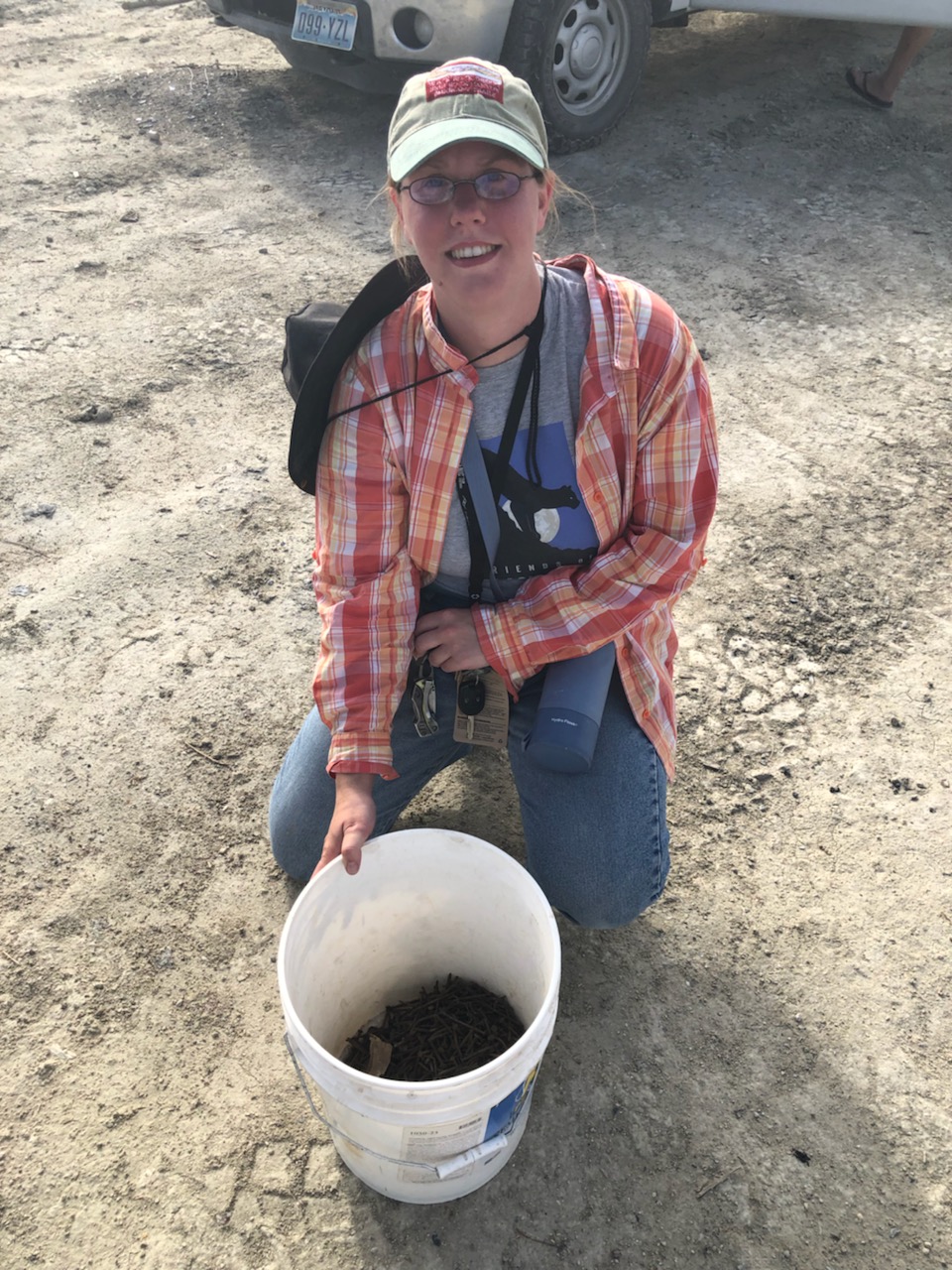
“It is one million plus acres and BLM has one small field office. There’s just no way to manage and protect an area that big without Friends of Black Rock High Rock, and Friends doesn’t exist alone,” Stacey says.
Her organization not only educates the public to foster stewardship of the land, but it also relies on the active participation of their membership and the broader community to manage and protect it. Together, they keeproads and trails usable, clean up the hot springs, and make sure art installations are accessible and protected from overuse.
Local residents also contribute their time and expertise to citizen science projects that monitor the springs, drought conditions and noxious weeds.
Looking to the Future
Stacey is keen to extend the impact of these community-based programs through further collaborations and partnerships.
“Membership is really, really important for us and so is building new partnerships. For me the challenge is finding more partners and people who consider this sense of place and space as something worth exploring and protecting,” she says.

She is also eager to work more closely with the Gerlach community, deepen the relationship with Burning Man Project, and strengthen the relationship between all the stakeholders in the area.
“I definitely think the town of Gerlach is part of our service, and not a little blip before you get into the conservation area. A lot of the people in Gerlach have been stewards of Black Rock long before we became an organization, and long before Burning Man came around, as well. Respecting their involvement with this place is really important,” Stacey says.
“I feel like a big part of my year-one responsibility is to listen to people’s experience and what they need. So, I would be very hesitant to say, ‘I’m gonna come in and I want the town to thrive and prosper,’ before I understand what that idea of thriving and prospering is for the people of Gerlach.”
But she sees the Fly Ranch nature walks and K-12 science project as a great first example of how her organization, Burning Man and the local community can work together to further their shared stewardship of the area and to create environmental and social impact.
She’s also interested to see how the Burning Man event might continue to inform this kind of civic engagement.
A three-time Burning Man event attendee, Stacey has witnessed the event grow from “a kind of magical integration into place” in the 1990s to a pulsing metropolis in 2012 — the last time she visited Black Rock City.
She hopes to return this year as an Earth Guardian, but the change that excites her the most is the work Burning Man Project is doing beyond the playa and what the event might mean for her own work in the world.
“Can it be something that really lends to a dialogue about a world that’s in crisis?” Stacey wonders. “‘What does it have to teach us about how to be a civil society, a fair society, an engaged society? Can we live differently? And can it be a testing ground, a proving ground, for those kinds of things?”
Wanna give back to the place you call Home? Here are the ways you can help Friends of Black Rock High Rock, as well as the area.
- The Gerlach visitor center needs repairs to its roof and ceiling, and they’re looking for a licensed contractor, volunteers and financial support.
- Are you a developer? Friends of Black Rock High Rock want to develop an app to help others explore the National Conservation Area via stories, narratives, images etc. This could inform people of hazards (road closures, weather) and educate them about the unique archaeology, cultural history etc.
- They need more volunteers for a robust list of service projects.
- They want to run a campaign about the fragility of the environment (Call of the Mild) and would like some marketing/graphic design support.
- Gerlach lacks the municipal infrastructure to deal with extra Burner trash, so plan ahead when leaving playa this year. Make sure you leave room in your car to pack out all trash securely. Transport all trash away from Black Rock Desert and the town of Gerlach.
Contact volunteer@blackrockdesert.org
Top photo: Looking down the Black Rock Desert at sunrise from the top of Trego (Old Razorback) Mountain. (Photo by Cameron Grant)

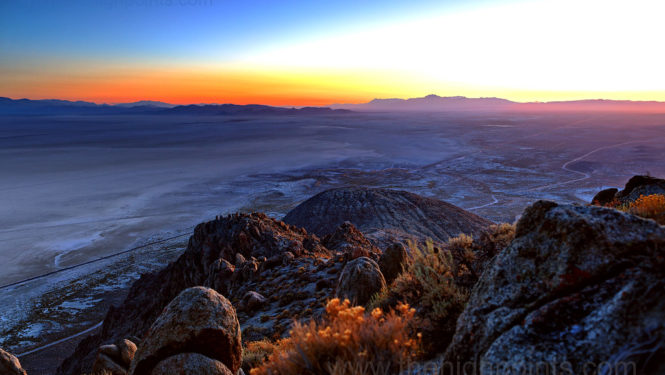

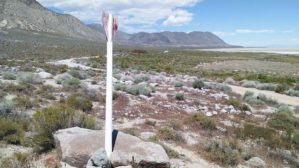

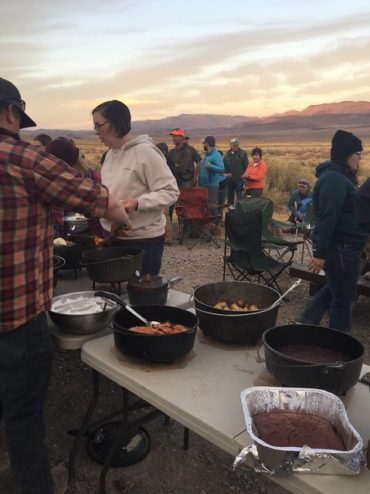
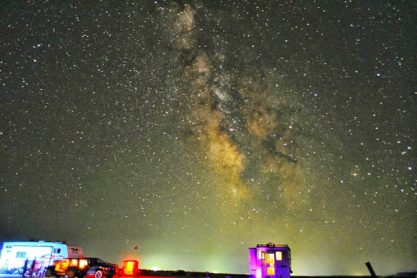
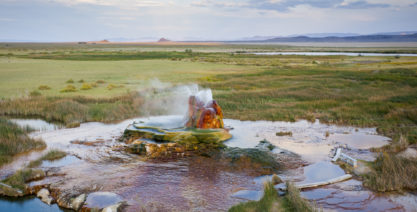
What does Stacy feel about the tons of buried rebar out on the old BM sites? Does anyone want a metal detector, or should we let those sleeping dogs lay…
Yesterday I shopped at Whole Earth. I bought a bag for my groceries that said I’m saving the planet. So don’t guilt me.
Report comment
Comments are closed.